Your Cart is Empty
MOTO Products
shop your way
Choose a shopping experience
Same great Risk Racing products, 3 completly different ways to shop them.
Choose a shopping experience
Same great Risk Racing products, 3 completly different ways to shop them.
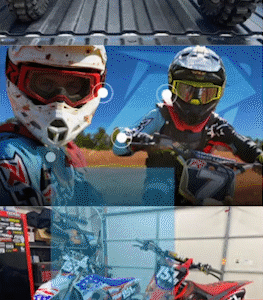
Lifestyle Shopping
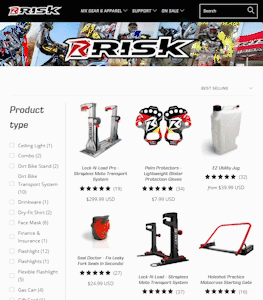
eComm Shopping
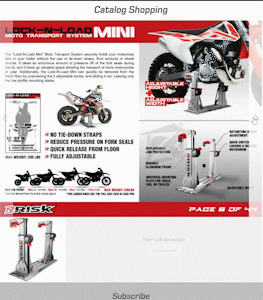
Catalog Shopping
MOTO TYRES
MOTO Gear & Apparel
How Do You Transport a Dirt Bike? Trucks, Trailers, Cars & Vans
September 30, 2020 15 min read
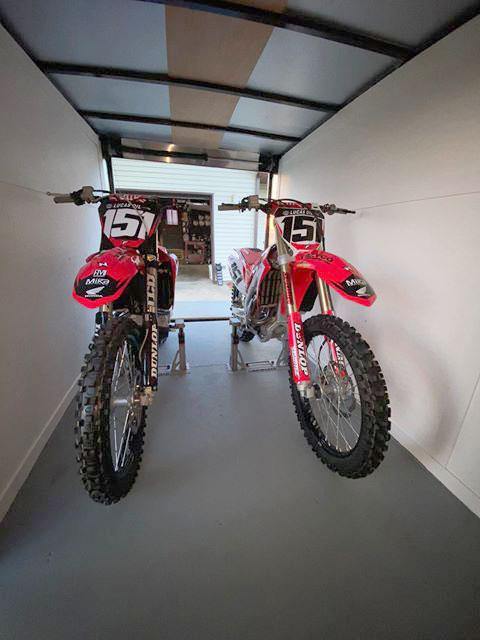
Thinking about buying a dirt bike or maybe you're just brand new to motocross but you're getting serious enough to want to go visit your local powersports dealership. Since dirt bikes can weigh a hefty 200 plus pounds and some of you may have multiple, it’s a good idea to plan ahead and decide which method of dirt bike transportation is best for you.
A pickup truck, trailer, hitch carrier, and moto van are popular options to transport your dirt bike. You will need a ramp, whether it be freestanding or built into the vehicle. Once loaded, you’ll need to secure it properly with either tie-down straps or a moto transport system.
In the rest of the article, we’ll go through the different methods you can use to safely transport your dirt bike.

Transport Your Dirt Bike with a Pickup Truck
Pickup trucks are the good-old-fashioned way of transporting dirt bikes. If you have a pickup truck, you can use it to haul your bikes with fairly minimal expense.
Of course, before you can haul your dirt bike to the race track, you have to get your bike into the back of the truck first. There are several ways to do this.
Some prefer riding their dirt bikes up a ramp and getting it directly into the back of the truck using the power of the dirt bike. This will take some nerves of steel because you are essentially playing Russian Roulette with the back of your truck cab. This is a very silly situation to endanger yourself and both your vehicle and your bike so bottom line, please don’t ride the bike into the truck.
Now that you know what not to do, one option is to push your bike up a ramp into the bed of your truck. With this method, you’ll want an extra ramp to walk on alongside your bike. If your dirt bike is big, you’ll need to get a faster running start to get it all the way up into the truck.
Another option is to enlist the help of another person. With you being the main source pushing the bike into the truck, have them follow the bike up the ramp to help with any additional pushes needed, or to help balance the bike at any point.
Now that you know how to safely get your dirt bike into the back of your pickup truck, let's look at some of the other aspects of truck transportation.
Truck Size or Bed Length
Transporting your bike will depend on your truck size and the size and number of dirt bikes you have. If you have a small Chevy S10 you can probably transport your kid’s bike and all their gear. If you need to get three dirt bikes to the track every weekend, you’re probably in more of a Full-size to heavy-duty sized truck with a king cab and long bed.
One of the most common problems with transporting a dirt bike using a pickup truck is that the average standard bed length is 77 inches and the average length of a dirt bike Is 85 inches. The cargo is longer than the container.
One way to solve this problem is to leave the tailgate down. This isn’t always ideal because the tailgate can bounce during transport and they’re also unideal to keep a load on them as they are not rated to handle the same load as the truck bed itself.
If you prefer having the tailgate closed and you have a full-size dirt bike, then you can load it diagonally by securing the front wheel into one of the front corners of the bed and then move the rear wheel against the opposite corner so you can have enough room to close the gate.
With this in place, you need to secure your dirt bike itself so that it doesn’t move around during transit. The old method of securing a dirt bike on a truck is to use tie-downs on the handlebars and install wheel chocks or brackets. This can be really tricky if you are by yourself, not impossible, but a huge pain!
However, there’s a better way to keep your bike secured in your truck – the Lock-N-Load Pro, an innovative solution from Risk Racing that allows you to easily and properly secure your bike when transporting it. It’s like having a quick connect for your dirt bike to just snap into your truck bed.
The Lock-N-Load Pro moto transport system is a great solution if you have multiple bikes. If you think about how many straps you use on one dirt bike it starts to become a webbed mess as you start adding more bikes to the equation.
This can make some loading configurations nearly impossible. However, with Risk Racing's quick release system and its ability to be mounted pretty much anywhere in the bed, multiple bikes are absolutely possible.
We’ll get more into details about the Lock-N-Load Pro throughout this article as it is a great option for every transport type.

Transport a Dirt Bike with a Trailer
If a trailer is more your style or if you just have more motocross gear, equipment, and accessories than can’t all fit in one truck, then it’s time to explore the dirt bike trailer option.
Trailers are probably the second most common way to haul a dirt bike after the truck, and there are several types of trailers you can choose from.
Just like in pickup trucks, there has to be a way to secure your bike to keep it from moving around. If you buy a dedicated motocross trailer, it could include anchor points that you can use to secure your bike.
One type is the very common flatbed or utility type trailer that you can use to transport your dirt bikes with. These have a short railing around the front and side and a ramp door attached to the back of the trailer that folds up to a locked vertical position essentially creating a back wall while transporting.
You can also use an enclosed trailer to transport your dirt bike. The major advantage of an enclosed trailer is that it protects your bike from debris and weather. It also gives you additional storage space for all your gear, and besides being able to transport your bike safely in it, it can also serve as your garage and camper. This can really come in handy not having to set-up and tear-down camp on those racing weekends.
The only thing you really might have to figure out is where to hook up your tie-downs, and it just might depend on the exact enclosed you’re looking at. Some enclosed trailers have built-in tie-down spots along the floor on each side or maybe even on the walls. Some trailer owners opt to install wheel chocks into the floor as an option to hold their dirt bike securely.
The hands-down easiest method for securing your dirt bike is going to be to install the Lock-N-Load Pro. It makes your life easier every time you travel, gives you peace of mind, and gives your fork seals a break.
The main disadvantages of an enclosed trailer are its higher cost and increased fuel consumption, but if you have the budget then this option is definitely the Cadillac of transportation options.
When transporting your dirt bike on a trailer, ensure it is properly locked to the hitch, and the hitch is securely locked to the vehicle (if it isn’t a solid connection).
Also, know your trailer dimensions so that you stay safe out on the road.
Another safety concern is cargo weight and more specifically weight distribution. Basically, if you have too much weight at the back of the trailer it will make the truck and trailer sway back and forth dangerously while driving.
If there is too much weight at the very front of the trailer then it will make the front end of the truck rise up which can be very dangerous as the brakes and steering can then be affected.
Now let’s take a look at a much smaller, more compact, and definitely more fuel-efficient option, the Moto Van.

Transport Your Dirt Bike in a Moto Van
Moto vans are vans that have been converted and custom-built for hauling around dirt bikes. Most moto van owners also build living quarters, kitchens, and toilets so they can live in and go on adventures in them.
While you can convert any van to transport your dirt bikes, you need to choose the right type of van to suit your needs and preferences. The most common vans that are converted into moto vans are Mercedes Sprinter, Nissan NV, Volkswagen Transporter, Ram Promaster, and Ford Transit cargo vans.
You’ll need to consider the cargo room and cabin space of the van, especially if you’ll be living in it. The number of bikes you plan to transport will also determine the size of the van you’ll choose. Other things you should consider are roof height, mileage, convenience, and reliability of the van.
Once you have your ideal van figured out, create a plan and list out everything you’ll need. There are several ways you can set up your moto van, depending on your needs and taste. Plan out your lighting, storage area, kitchen, and every other item. Your moto van will need some sort of lighting, STKR Concepts can cover you in that area.
Again, to transport your dirt bike in a moto van, you’ll need a moto transport system to secure your bike, and the Lock-N-Load Pro is the perfect solution for this.

Using a Hitch-Mounted Carrier with Your Car
Using a hitch-mounted carrier is a cheap way to transport your bike. They are particularly effective if you have to transport only one bike. These carriers can be easily attached to your car, and all you have to do is load your dirt bike on it.
Each carrier has a maximum weight capacity, and some come with an extendable loading ramp for easy loading of your bike. While most dirt bikes aren’t too heavy to load onto a hitch-mounted carrier, they can be very useful after a long day out on the tracks.
Before you transport your dirt bike with a hitch-mount, it’s important to consider the size and weight of your bike. These factors play a big role in the type of hitch-mount suitable for your bike. Also, check the strength of your car and how much weight it can safely handle.
You may need tie-down straps to keep your bike secured during transport. Also, your bike should be positioned such that it doesn’t block the taillights. Some hitch-mounts come with tail lights, but most of them are on the expensive side. The number plates and direction indicators may be obscured by your bike.
If your hitch carrier doesn’t come with tail lights, you can install a lighting board to keep your car road legal and prevent being crashed into.
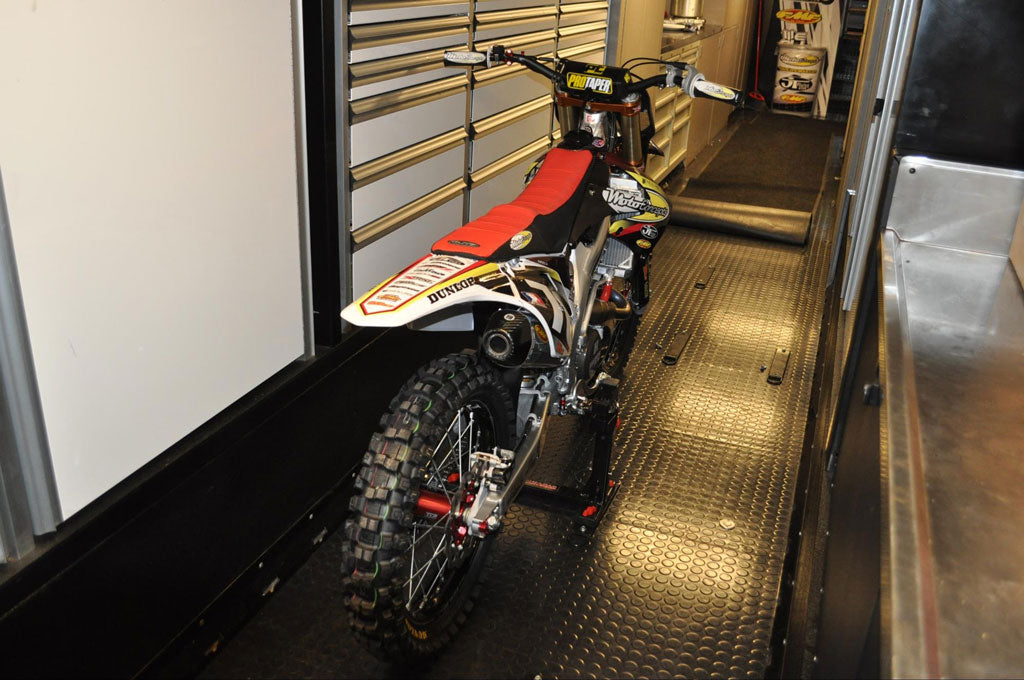
What Equipment Do You Need for Transporting a Dirt Bike?
When transporting a dirt bike, there is some specific equipment you’ll need. One of the most important things you’ll need is a motorcycle ramp.
A motorcycle ramp allows you to efficiently and safely load and unload your bike from your trailer, pickup, or moto van.
There are different types and variations of ramps, but they all serve the same purpose. Whether you’re new to motocross or have been riding for years, a ramp is an important piece of equipment to have.
What to Look for in a Motorcycle Ramp
While a ramp is important for every dirt biker, choosing the wrong one can cause problems for you and your family. Here are some of the things to consider when choosing a random.
Loading Height
The loading height of your truck bed or moto van is one of the most important things to consider when choosing a dirt bike. Each vehicle is different, and the height from the ground is what will determine the length of your ramp.
If you own different vehicles and plan to use a single ramp for all of them, consider the height of the vehicles before settling in on the length of your ramp. A steeper ramp will be more difficult and less safe to push the bike up.
Load Capacity
The loading capacity of your ramp is what determines the amount of weight it can handle. Each ramp has its loading capacity, and you’ll have to choose one that is suitable for your bike. That is, it should be able to handle the weight of your bike.
Depending on your style of loading, you may need it to handle your weight as well. Other important factors to consider are the width, length, and weight of the ramp.
Connection Points
All ramps are designed with different connection systems, and while it may not seem like much, it is very important when selecting a ramp. Some ramps have synthetic-coated lips that connect to the vehicle while others use a solid place with a locking pin to secure the ramp to the vehicle.
Ramp Weight and Construction
Another important factor to consider is the material your ramp is made of. Many ramps are made from heavy-duty, lightweight aluminum alloy.
The longer the ramp, the less steep the incline will be and the easier it will be to walk a dirt bike up. It can't be so long that it's just impractical so a lot of the ramps on the market today fold in half.
The ideal ramp should be lightweight and not have the potential to cause you any injuries. It should also be one that can be easily stored after loading or unloading your dirt bike.

Loading Your Dirt Bike With a Ramp
You’ve seen how important a ramp is for loading your dirt bike. Now, let’s look at how to safely load it in your pickup truck, moto van, or trailer. We’ll assume you have your ramp ready.
- Park your pickup, van, or trailer in a flat area. If you’re loading into a truck, park it such that the tailgate is backed up to an incline. This reduces the angle of the ramp and makes it easier to load.
- Set up and secure your ramp on the edge of your van, trailer, or tailgate of your truck.
- Put your bike gear in neutral and alight it a few feet from the ramp’s foot.
- Grab your bike by its handlebars while on one side and your loading partner on the other.
- With a coordinated effort, push the bike up the ramp as far as it can go.
- Once you get to a stand-still, apply the brake and let your loading partner climb in and pull the bike into the truck.
While the procedure to load your dirt bike with a ramp may seem easy and straightforward, if you’re not careful, you’ll cause damage to your bike or yourself.

Loading Your Dirt Bike Alone
Loading alone is not recommended, as it is not safe. If you go too slow, the bike may topple off on one side of the ramp, and if you go too fast, you may smack your engine case or end up on the other side of your vehicle.
If, for some reason, you have to load your dirt bike by yourself and don’t have someone else to pass it on to, you’ll need something to stand on. Your dirt bike stand will come in handy here.
As you may know, a dirt bike stand is a must for any serious motocross racer. Bike stands are designed for keeping your bike upright during general maintenance, repairs, tire changes, and storing in the garage. It’s similar to the jack of a car.
If you’re looking for a dirt bike stand that ticks all the boxes, we recommend the Risk Racing A.T.S. Stand. This bike stand truly is the real deal. It can be used with any dirt bike, irrespective of its size or height.
The Risk Racing A.T.S. or “Adjustable Top Stand” allows you to adjust the angle of the top of the stand and secure it in place. This feature means that your bike will stay balanced on the stand no matter the angle of your chassis, lifting both tires off the ground. With both tires lifted, you can easily make repairs and do general maintenance on your bike.
Another unique feature is the magnetic bolt panel. The Risk Racing A.T.S. has magnets on both sides of the stand where you can put your bolts and nuts during maintenance, keeping your hardware clean and accounted for.
This is definitely not your regular stand. It is built tough with powder-coated steel to ensure maximum durability.
Here’s a video to show you how the Risk Racing A.T.S. bike stand works:
Loading Your Dirt Bike Without a Ramp
You can also still load your dirt bike onto your vehicle even without a ramp. Sometimes, a strong log of wood can do the job, but you can also lift it into your vehicle.
Lifting your dirt bike into your vehicle can result in personal injuries or a damaged bike if you don’t do it right. As a result, we recommend lifting it with the help of your friend or training partner.
- To lift your bike into the vehicle, both of you will need to stand either side of the bike.
- The person standing on the left side will need to hold on the left handlebar with their right hand and put their left hand under the left fork.
- The person on the right will do the same on the other side of the bike.
- You’ll both lift the front of the bike and place the front wheel on the edge of the van, truck, or trailer.
- With the front wheel resting on the edge of your vehicle, one of you has to get in the van and put the bike in first gear while holding the handlebars.
- The person standing outside the van would move to the back of the bike and push the rear up, holding the wheel.
- Since the bike is in gear, it shouldn’t move around, and you can push the entire bike into the vehicle.

Securing Your Bike in The Vehicle
Once you’ve loaded your bike into the truck, the next step is to secure it so that it doesn’t move around when you’re transporting it. As mentioned earlier in the article, the old method of securing a dirt bike is to use tie-down straps, wheel chocks, or anchors. The Risk Racing Lock-N-Load Pro eliminates all these and allows you to secure your bike simply.
Not only does the Lock-N-Load Pro eliminate the need for tie-downs or wheel chocks, but it also takes off a huge amount of pressure on your fork seals during transit and frees up space on your vehicle for you to transport more dirt bikes and racing gear. This would be almost impossible if you’re using tie-downs.
The Lock-N-Load Pro is easy to install. It comes with a low-profile base plate that you can mount on the floor of your van, truck, or trailer. Once the base plate is in place, all you have to do is slide in the jaw arms and secure it by tightening the thumbscrews on each arm. To ensure maximum durability of the jaws, they are built with heavy-duty aluminum.
The Lock-N-Load Pro uses a ratchet system that makes it easy to lock down your bike. It is pretty straightforward to use. All you need to do is flip down the switch on the jaws, roll your bike in until your footpegs are touching the jaws, and press down on each jaw. It will lock your bike down firmly.
If you’re concerned about the jaws damaging your footpegs, don’t worry, the jaws are rubberized, so your footpegs are protected. To unlock your bike, flip the switch on the jaws and press down a little on them and then release. The ratchet will automatically come up, and you can safely roll out your bike.
If your bike is too wide, you can loosen the screws on the jaws and adjust them side to side so your bike can fit in. If you want to remove the jaws and clean the base plate, all you have to do is loosen and completely remove the screws holding the jaws down. The jaws will be released, and you can easily slide them out.
There are two variants of the Lock-N-Load Pro: one is the standard size, which is designed for bikes in the 85 CCs to 690 KTM enduros range, and the other is the Lock-N-Load Mini, which fits the 50 CCs to 110 CC trail bikes.

Can You Transport Your Bike at An Angle or On the Side?
The quick answer is NO, you can’t transport or leave your bike at an angle or on its side for any extended periods of time. Dirt bikes have so many systems that rely on some type of fluid to function properly and they are all designed to work in the upright position. You lay a bike down and you will have a fluid mess on your hands, not to mention the potential damage to the bike.
So, while the Lock-N-Load Pro is so amazing that you possibly could mount a bike at some crazy angle doesn’t mean it’s a good idea for your dirt bike. The best way to transport your bike is in the upright position. This is because, during transit, your bike tires and suspension are able to absorb the shock and vibrations.
If you must place your bike on its side, drain all the fluid, remove the battery, and ensure the cooling system is sealed. You may also need to heavily pad the underside of your bike.

Can You Ride Your Dirt Bike to the Race Track?
I guess theoretically you could ride your bike to the track in the same way Forrest Gump could run across the United States. They are both potentially possible but are definitely not the most ideal way to get the job done.
Most states don’t require dirt bike riders to obtain a license, so you can ride your dirt bike to a race if you can find a legal path to follow. You can ride them through private lands where you’re not required to pay a fee.
However, you can’t ride them on public roads as they are illegal, and you’ll be violating a few laws by doing so. It’s best to stick to trails meant for off-road riding.
This makes sense as you’ll be putting your life and those of others in danger on a public road. While there are some reconfigurations you can implement to make your bike street legal, it may not be worth it for this example.
Imagine taking a long ride to a trail or motocross track on your dirt bike. By the time you get to the start gate and the real race is to begin, you’ll probably be tired and not in top condition.
Also, you may not have enough space on the bike to carry all the gear you need, so the best way to get your dirt bike to the track is still through a truck, trailer, or moto van.
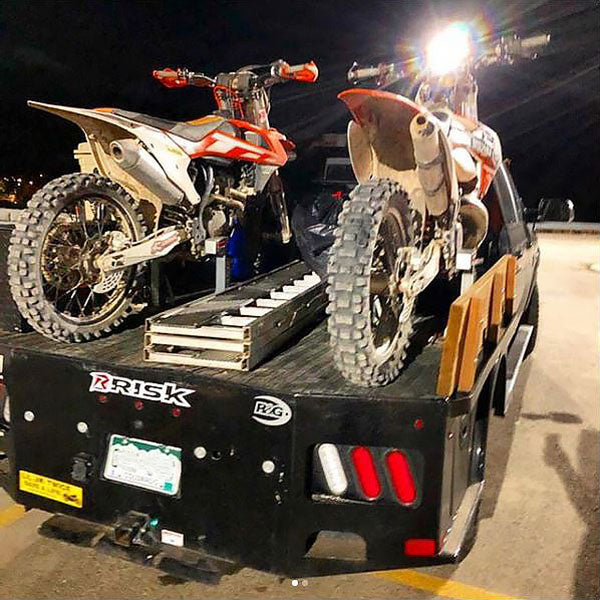
Final Words
There are several ways to transport a dirt bike. The most common method is to use a pickup truck. Other methods include securing it in a trailer or moto van and fastening it to the back of a car with a hitch-mount.
Most riders prefer using a truck because it’s simple and easy. But a moto van or enclosed trailer will offer better protection from road debris and the elements.
No matter your preferred method, you’ll need a ramp to load your bike into your vehicle. Once loaded, you must secure it properly with the Risk Racing Lock-N-Load Pro.
If you need a durable dirt bike stand for your bike repairs and maintenance, the adjustable Risk Racing A.T.S. Magnetic Stand or the RR1 Ride-On Stand is what you’re looking for. To stay on top of your game and get the holeshot in every race, we recommend the Risk Racing Holeshot Race Gate.
Leave a comment
Comments will be approved before showing up.
Subscribe
Sign up to get the latest on sales, new releases and more …
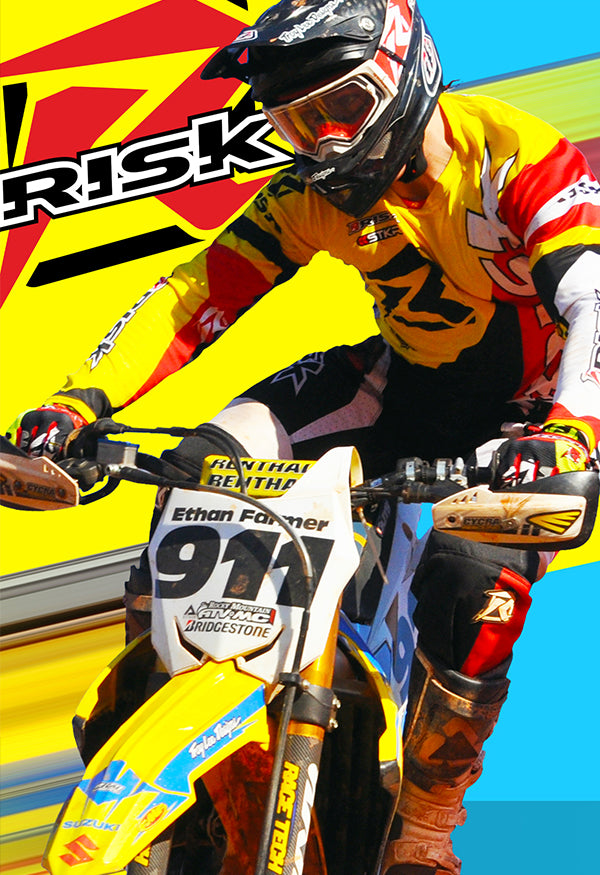
Limited Time 10% Off
Save on your 1st order and get email offers when you join.
Eligible for first-time website purchases only. Emails may take a few minutes to process and could get flagged by email providers as junk so be sure to wait a little bit and check your junk and/or spam folders.

 UK/EU▾
UK/EU▾




























